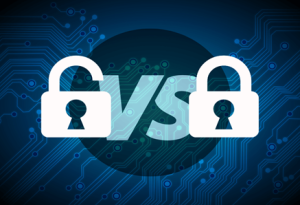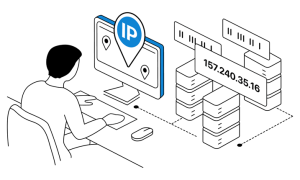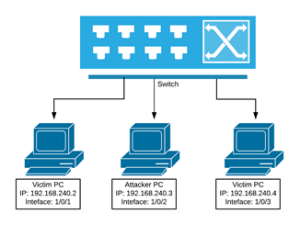Understanding the differences between insecure and secure ports is crucial for ensuring data security and privacy in various network communications. Implementing secure protocols and utilizing secure ports can mitigate the risks associated with transmitting sensitive information over networks.

Insecure Ports:
Insecure ports, such as Port 80 (HTTP), 21 (FTP), and 23 (Telnet), lack encryption and security mechanisms.
These ports are used for transmitting data in plaintext, making them susceptible to interception and exploitation.
Insecure ports are commonly associated with protocols like HTTP, FTP, and Telnet, which do not inherently provide encryption for data transmission.
Secure Ports:
Secure ports, such as Port 443 (HTTPS), 22 (SSH), and 993 (IMAPS), implement encryption protocols to secure data transmission.
These ports utilize SSL (Secure Sockets Layer) or TLS (Transport Layer Security) protocols to encrypt data, ensuring confidentiality and integrity.
Secure ports are essential for transmitting sensitive information securely, including financial transactions, login credentials, and personal data.
Key Differences:

- Encryption: Insecure ports transmit data in plaintext, while secure ports encrypt data using SSL/TLS protocols.
- Vulnerability: Insecure ports are vulnerable to interception and exploitation, whereas secure ports provide protection against unauthorized access.
- Recommended Use: Insecure ports are suitable for non-sensitive data transmission, while secure ports are essential for transmitting sensitive information securely.
- Security Measures: Insecure ports lack encryption and authentication mechanisms, while secure ports employ encryption, authentication, and integrity checks.

Port Number |
Insecure Port |
| 0 | HTTP (Hypertext Transfer Protocol) |
| 21 | FTP (File Transfer Protocol) |
| 23 | Telnet (Remote Login Service) |
| 25 | SMTP (Simple Mail Transfer Protocol) |
| 110 | POP3 (Post Office Protocol version 3) |
| 143 | IMAP (Internet Message Access Protocol) |
| 389 | LDAP (Lightweight Directory Access Protocol) |
| 546 | DHCPv6 Client |
| 666 | Doom Game Server |
| 1433 | Microsoft SQL Server |
| 1521 | Oracle SQL |
| 3306 | MySQL Database Server |
| 5900 | Virtual Network Computing (VNC) Server |
| 2049 | NFS (Network File System) Server |
| 5060 | SIP (Session Initiation Protocol) |
| 1723 | PPTP (Point-to-Point Tunneling Protocol) |
| 3389 | RDP (Remote Desktop Protocol) |
| 69 | TFTP (Trivial File Transfer Protocol) |
| 445 | Microsoft-DS (Active Directory, Windows shares) |
| 21 | FTP (File Transfer Protocol) |
| 23 | Telnet (Remote Login Service) |
| 110 | POP3 (Post Office Protocol version 3) |
| 143 | IMAP (Internet Message Access Protocol) |
| 22 | SSH (Secure Shell) |
Port Number |
Secure Ports |
| 443 | HTTPS (HTTP Secure) |
| 25 | SMTP over TLS/SSL |
| 993 | IMAPS (IMAP over SSL/TLS) |
| 995 | POP3S (POP3 over SSL/TLS) |
| 636 | LDAPS (LDAP over SSL/TLS) |
| 989 | FTPS (FTP over SSL/TLS) |
| 990 | FTPS (FTP over SSL/TLS) |
| 992 | TELNETS (Telnet over SSL/TLS) |
| 992 | LDAPS (LDAP over SSL/TLS) |
Below are the Explanation for some of the ports mentioned in the table:
HTTP (Port 80):
- Abbreviation: HTTP
- Use: Hypertext Transfer Protocol for transmitting web pages and data on the World Wide Web.
FTP (Port 21):
- Abbreviation: FTP
- Use: File Transfer Protocol for transferring files between a client and server on a computer network.
Telnet (Port 23):
- Abbreviation: Telnet
- Use: Remote login service allowing users to log into remote computers and execute commands.
SMTP (Port 25):
- Abbreviation: SMTP
- Use: Simple Mail Transfer Protocol for sending and receiving email messages.
POP3 (Port 110):
- Abbreviation: POP3
- Use: Post Office Protocol version 3 for retrieving email messages from a mail server.
IMAP (Port 143):
- Abbreviation: IMAP
- Use: Internet Message Access Protocol for accessing and managing email messages on a mail server.
LDAP (Port 389):
- Abbreviation: LDAP
- Use: Lightweight Directory Access Protocol for accessing directory services over a network.
DHCPv6 Client (Port 546):
- Abbreviation: DHCPv6
- Use: Dynamic Host Configuration Protocol for IPv6 clients to obtain IP addresses and network configuration settings.
Doom Game Server (Port 666):
- Abbreviation: N/A
- Use: Used by the game “Doom” for multiplayer gaming sessions.
Microsoft SQL Server (Port 1433):
- Abbreviation: N/A
- Use: Used by Microsoft SQL Server for database communication.
Oracle SQL (Port 1521):
- Abbreviation: N/A
- Use: Used by Oracle Database for SQL communication.
MySQL Database Server (Port 3306):
- Abbreviation: N/A
- Use: Used by MySQL Database Server for database communication.
VNC (Port 5900):
- Abbreviation: N/A
- Use: Virtual Network Computing for remote desktop sharing and control.
NFS (Port 2049):
- Abbreviation: NFS
- Use: Network File System for sharing files and directories between Unix/Linux systems over a network.
SIP (Port 5060):
- Abbreviation: SIP
- Use: Session Initiation Protocol for initiating, modifying, and terminating multimedia sessions such as voice and video calls over IP networks.
PPTP (Port 1723):
- Abbreviation: PPTP
- Use: Point-to-Point Tunneling Protocol for creating VPN (Virtual Private Network) tunnels over the Internet.
RDP (Port 3389):
- Abbreviation: RDP
- Use: Remote Desktop Protocol for providing remote desktop access and control over a network.
TFTP (Port 69):
- Abbreviation: TFTP
- Use: Trivial File Transfer Protocol for transferring files between client and server with minimal security features.
Microsoft-DS (Port 445):
- Abbreviation: N/A
- Use: Microsoft Directory Services for providing access to shared resources and Active Directory services.
SSH (Port 22):
- Abbreviation: SSH
- Use: Secure Shell for secure remote login, command execution, and file transfer over an encrypted network connection.
HTTPS (Port 443):
- Abbreviation: HTTPS
- Use: Hypertext Transfer Protocol Secure for secure communication over the Internet, providing encryption and data integrity.
So, this article must have given you a brief explanation about what are secured and insecure ports. We have also discussed about the differences between them and the uses of them.
